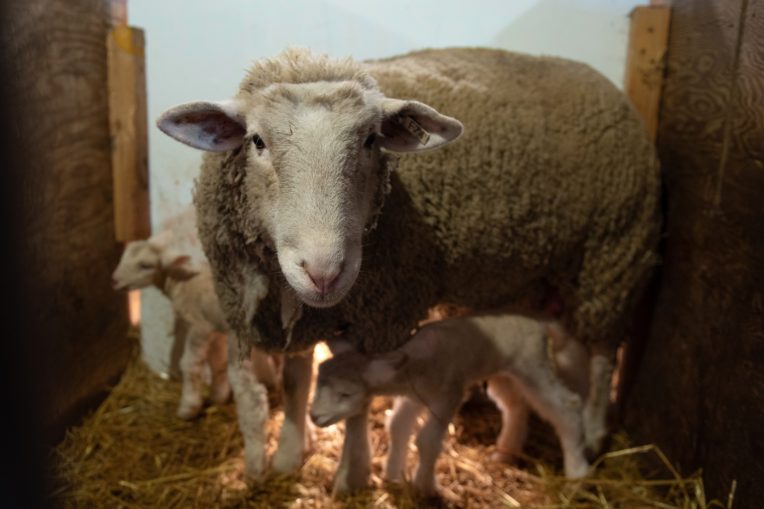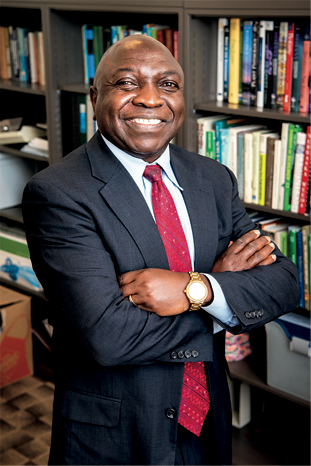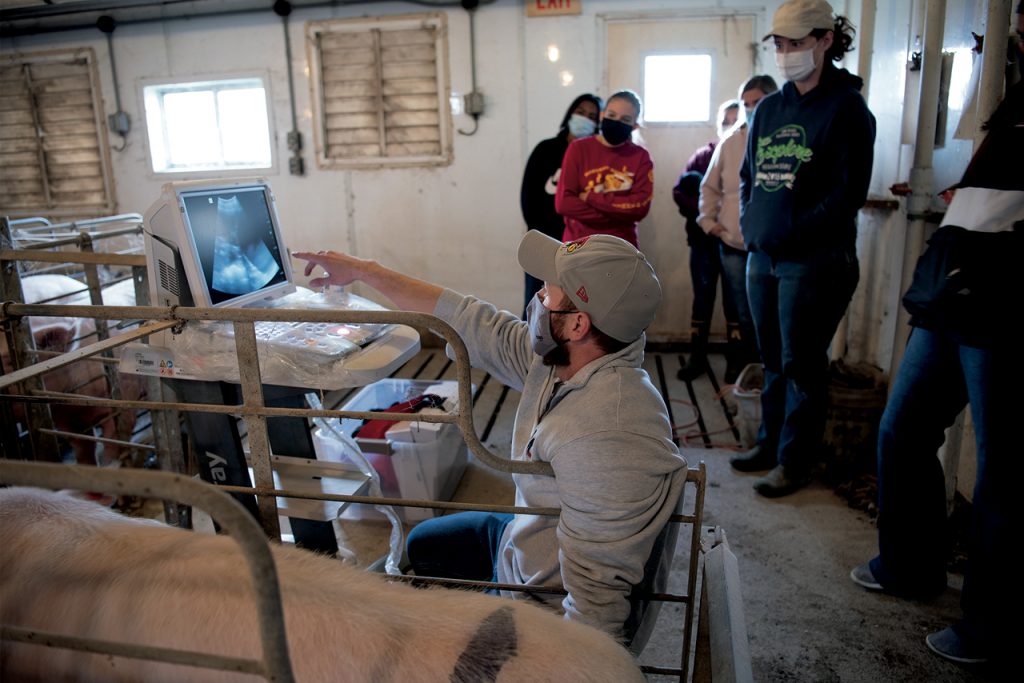Illinois State’s Department of Agriculture used to attract students from family farms who grew up baling hay and showing cattle. Now it’s a training ground for those who want to feed the world, save the planet, and earn their way into the nation’s top veterinary schools.
The department that was founded in the early 1900s is thriving nearly 30 years after its existence was threatened. An Illinois Board of Higher Education task force recommended eliminating the program as the state’s financial condition deteriorated during the 1991-1992 fiscal year.
Then ISU President Tom Wallace rallied with alumni, farm groups, and community supporters to save the program. They argued that half of the department’s income came from the University Farm and noted that the program met a need in the state as one of four Illinois universities providing bachelor’s and master’s degrees. The department was saved and has since flourished.
It is chaired by Dr. Fanson Kidwaro, who left the University of Central Missouri (UCM) last summer to lead the department. He was impressed by the faculty and students, the University Farm at Lexington, relationships ISU has with agriculture partners, and the ground beneath his feet.
Appears In“Illinois has some of the most fertile soils in the U.S.,” he said. “This is the place to be.”
Originally from Kenya, Kidwaro served as department chair of biology and agriculture at UCM. His research includes switch grass, using cropping systems management to improve sustainability and productivity, and bio-technology in the agriculture industry. He considers ISU’s farm to be one of the department’s greatest assets, and would like to expand it for scholarly work and teaching.
“The University Farm is our laboratory. A lot of our young faculty are conducting their research in animal science and crop and soil science,” Kidwaro said. “We’re trying to work a balance between production, having to generate revenue to meet the budget needs and the research side. We have to provide that laboratory and hands-on experience for our students.”
There are 400 diverse students in the major. Nearly half are women and almost one in six come from underrepresented populations. International students have enrolled from India, China, Brazil, Rwanda, and Ghana. Study abroad programs take agriculture majors to France and to farms in Argentina where they see farm-to-fork production.
Agriculture majors can choose from agribusiness, agriculture communications and leadership, agriculture education, agronomy management, animal industry management, animal science, crop and soil science, food industry management, horticulture and landscape management, and pre-veterinary medicine.
With a nearly 100 percent placement rate upon graduation, alumni work for global companies such as Syngenta and Bayer AG, along with the United States Department of Agriculture, Illinois cooperative GROWMARK, financial institutions, grain and livestock markets, the food industry, animal nutrition industries, schools, and home extension offices.
Senior Jenna McNelis, who is studying animal science, was attracted to ISU because of the department’s reputation. She appreciates the atmosphere in the Ropp Building, where the department is housed. Classes are also held in Turner Hall.
“Everyone is like your family,” she said. “It’s a tight-knit relationship and all the professors, whether you have classes with them or not, are willing to help you. All the professors are setting you up for career success.”
There are 400 diverse students in the major. Nearly half are women and almost one in six come from underrepresented populations.
McNelis is narrowing her job search to animal nutrition. Through classes at the farm, she’s done research on sheep, vaccinated cattle, and docked piglets’ tails. Between 2,000 and 3,000 piglets are born each year, along with 100 calves and 70 to 90 lambs.
In addition to income from crops and livestock, the farm is supported by corporate and individual donors. Over the past two years, the Illinois Farm Bureau provided $75,000 used to make several purchases—from a precision row-crop planter to an ultrasound used in animal physiology class. Assistant Professor Dr. Drew Lugar teaches ultrasonography and early pregnancy detection, which helps in making management, feeding, and breeding decisions.
Such experiential learning is a top focus of the department, which also emphasizes the environmental impact of agriculture.
“We are researching cover crops that will help reduce the carbon footprint. We don’t want agriculture to be given a bad name for producing global gases from cows and nitrous oxides from the farms,” Kidwaro said. “We’re trying to be good stewards so we can feed the population. We have to be cautious how we produce our food and take care of the environment.”
Among his goals are increasing enrollment; partnering with departments across campus; and strengthening ties to the agriculture industry, as well as other universities. He would like to see a classroom building on the 23-acre Horticulture Center in Normal, which has 18 gardens and native spaces that provide teaching, research, and community outreach.
Strengthening the program further will continue to attract students such as Isaac Brockman. He is a junior from a small family farm tilled by his father and grandfather. He wanted to study agribusiness and chose ISU after one visit.
“I was in love right away,” he said. “The advisors and professors I met made me feel like I was home. The professors are focused on hands-on learning and making connections outside the classroom, whether that’s bringing in professionals from the career world or experts and sharing examples with us on how to connect what we’re learning with what could be a career for us.”
An internship with GROWMARK helped Brockman zero in on a career with an agricultural cooperative. “It showed me the value these cooperatives have to these communities, and the farmers that live and work around where I’m from. That’s what I want to be a part of,” he said.
There is no doubt going forward that the department’s students will continue to find success as they fulfill their passion. Central Illinois has some of the most fertile soil in the world, and ISU’s agriculture department is thriving where planted more than a century ago.



